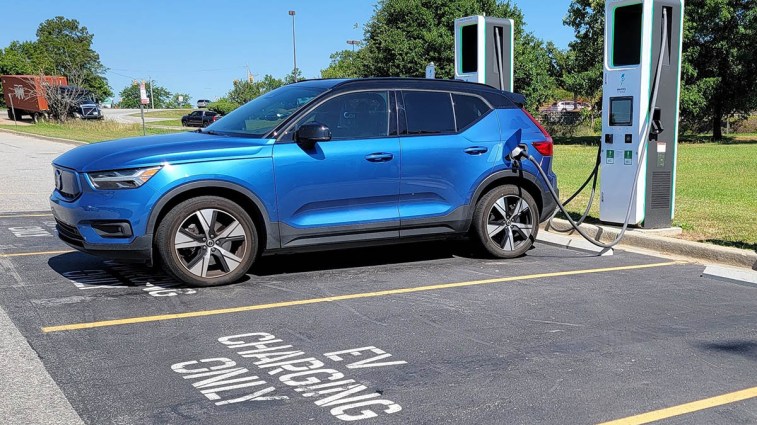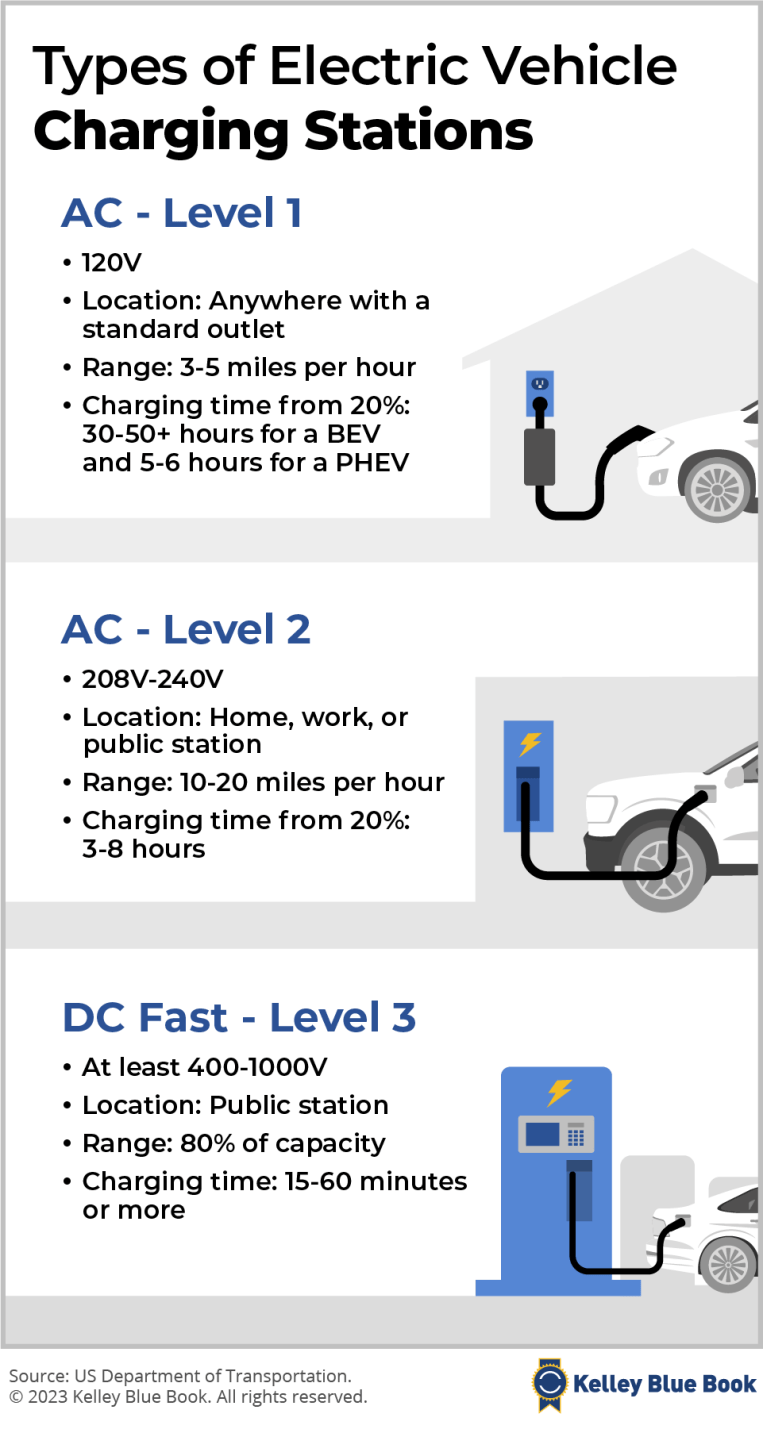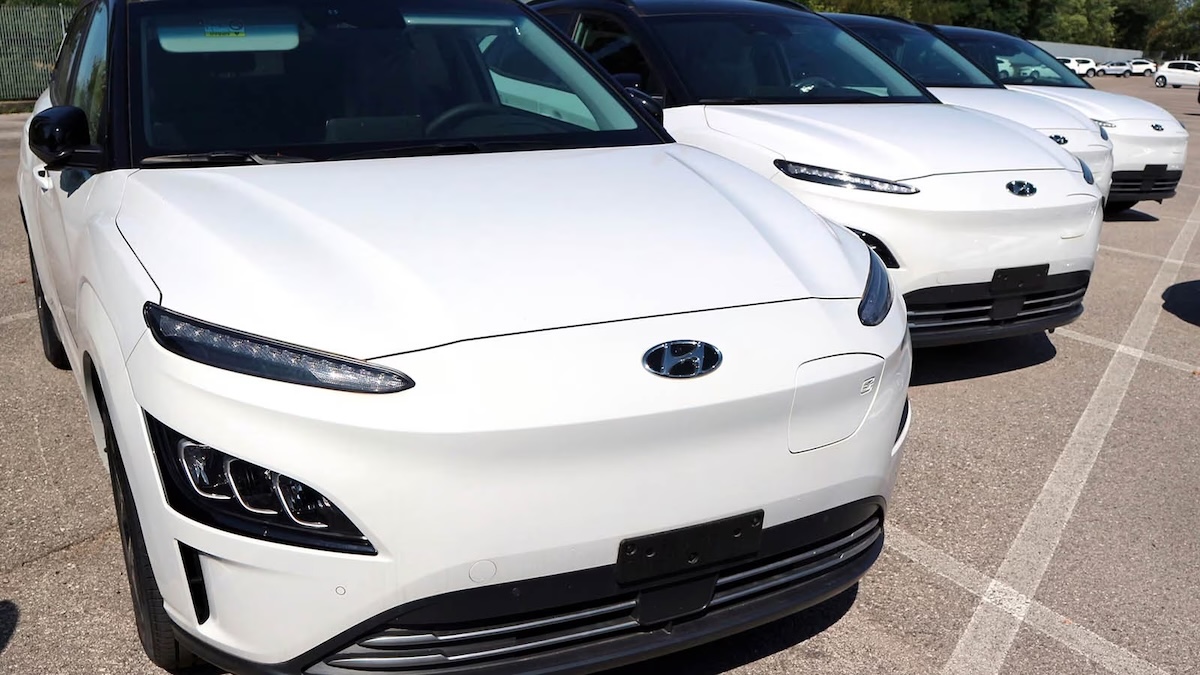The term “EV charging” refers to the act of transferring energy from an electric vehicle charging station to an electric car’s battery pack.
Recharging the battery in an EV to power its electric motor is akin to filling the gas tank of a vehicle with an internal combustion engine. The process involves connecting EV charging station equipment to the electric vehicle’s charging port.
Most EV drivers charge their vehicles at home. One method uses a charging cable plugged into a standard outlet. This method (Level 1) is the slowest and is suitable for plug-in hybrids but not practical for all-electric models with large batteries. Some homeowners with EVs install a Level 2 charger. These charging stations use a higher-voltage connection, permitting them to recoup energy for their daily miles overnight.
Public EV charging stations may be Level 2 equipment providing up to 20 miles of driving range per hour. Other public chargers are Level 3 DC fast chargers, which can replenish a battery to 80% capacity in a half-hour or less, depending on the EV.
Read Related Articles:
- How Much Does It Cost To Charge an Electric Car?
- Electric Cars 101: What You Need To Know About EVs
- Electric Car Buying Guide: How to Buy the Right EV









